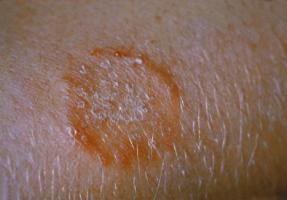What is a genetic marker? What is it for?
Discoveries of new genetic markers that help to identify and, therefore, to better prevent multiple diseases.
These markers are used to associate certain genetic mutations with the risk of appearance and development of numerous hereditary disorders. The use of new genome sequencing techniques will be essential in advancing knowledge of this type of disease and many others.
In this article we explain what a genetic marker is, what types of markers exist, how they are detected the different genetic variants and what are the main techniques used in sequencing genomics.
- Recommended article: "What does 'innate' mean?"
What is a genetic marker?
Genetic markers are segments of dna located at a known position (a locus) on a given chromosome. Normally, these markers are associated with specific disease phenotypes and are very useful in identifying different genetic variations in specific individuals and populations.
The technology of DNA-based genetic markers has revolutionized the world of genetics, since thanks to them it is possible to detect polymorphisms (responsible for the great variability between individuals of the same species) between different genotypes or alleles of a gene for a given DNA sequence in a group of genes.
Those markers that confer a high probability of disease occurrence are most useful as diagnostic tools.. A marker can have functional consequences, such as altering the expression or function of a gene that directly contributes to the development of a disease; and conversely, it may not have any functional consequence, but may be located close to a variant functional so that both the marker and the variant tend to be inherited together in the population general.
DNA variations are classified as "neutral" when they do not produce any changes in metabolic traits or phenotypic (the observable traits), and when they are not subject to any evolutionary pressure (either positive, negative or balancer); Otherwise, the variations are called functional.
Mutations in key nucleotides in a DNA sequence can change the amino acid composition of a protein and lead to new functional variants. Said variants may have a higher or lower metabolic efficiency compared to the original sequence; they can lose their functionality completely or even add a new one.
Polymorphism detection methods
Polymorphisms are defined as genetic variants in the DNA sequence between individuals of the same species.. These can have consequences on the phenotype if they are found in coding regions of the DNA.
To detect these polymorphisms, there are two main methods: the Southern method, a nucleic acid hybridization technique; and the polymerase chain reaction PCR technique, which makes it possible to amplify small specific regions of DNA material.
Using these two methods, genetic variations in DNA samples and polymorphisms in a specific region of the DNA sequence can be identified. However, the studies carried out show that in the case of more complex diseases it is more difficult to identify these genetic markers, since they are usually polygenic, that is, caused by defects in multiple genes.
Types of genetic markers
There are two main types of molecular markerss: those of post-transcription-translation, which are carried out by an indirect DNA analysis; and those of the pretranscription-translation type, which make it possible to detect polymorphisms directly at the DNA level and which we will discuss below.
1. RFLP markers
RFLP (Restriction Fragment Length Polymorphism) genetic markers are obtained after extraction and fragmentation of DNA, by cutting an endonuclease by restriction enzymes.
The obtained restriction fragments are then analyzed using gel electrophoresis. They are a fundamental tool for genomic mapping and in the analysis of polygenic diseases.
2. AFLP markers
These markers are biallelic and dominant.. Variations at many loci (multi-locus naming) can be sorted simultaneously to detect variations at a single nucleotide from unknown genomic regions, in which a given mutation may be present frequently in functional genes indeterminate.
3. microsatellites
Microsatellites are the most popular genetic markers in genetic characterization studies. Its high mutation rate and its codominant nature make it possible to estimate the genetic diversity within and between different breeds, and genetic mixing between breeds, even if they are closely related.
4. Mitochondrial DNA markers
These markers provide a quick way to detect hybridization between species or subspecies.
Polymorphisms in certain sequences or in the control region of mitochondrial DNA have contributed, to a great extent, to the identification of the progenitors of domestic species, establishing geographic patterns of genetic diversity, and understanding breeding behaviors. domestication.
5. RAPD Markers
These markers are based on the polymerase chain reaction or PCR technique. The fragments obtained by RAPD are amplified in different random regions.
Its usefulness lies in the fact that it is an easy-to-use technique and allows us to quickly and simultaneously distinguish many polymorphisms. It has been used in the analysis of genetic diversity and the improvement and differentiation of clonal lines.
Genome sequencing techniques
Many of the diseases that exist have a genetic basis. The cause is usually determined by the appearance of one or more mutations that cause the disease or, at least, increase the risk of developing it.
One of the most common techniques to detect these mutations and that has been used until recently is the genetic association study., which involve the sequencing of the DNA of one or a group of genes that are suspected to be involved in a certain disease.
Genetic association studies study the DNA sequences in the genes of carriers and healthy people, in order to find the responsible gene(s). These studies have attempted to include members of the same family to increase the probability of detection of mutations. However, this type of study only makes it possible to identify mutations linked to a single gene, with the limitations that this entails.
In recent years, new sequencing techniques have been discovered that have made it possible to overcome these limitations, known as next-generation sequencing (NGS) techniques. English). These allow sequencing the genome investing less time (and less money). As a result, the so-called Genome-Wide Association Studies or GWAS (Genome-Wide Association Studies) are currently being carried out.
Genomic sequencing using GWAS allows all mutations present in the genome to be explored, exponentially increasing the probability of finding the genes responsible for a certain disease. This has led to the creation of international consortia with researchers from all over the world sharing chromosome maps with the risk variants of a multitude of diseases.
However, GWAS are not without limitations, such as their inability to fully account for genetic and familial risk. of common diseases, the difficulties to evaluate rare genetic variants or the small effect size obtained in most of the studies. Undoubtedly problematic aspects that will have to be improved in the coming years.
Bibliographic references:
Korte, A., & Farlow, A. (2013). The advantages and limitations of trait analysis with GWAS: a review. Plant methods, 9(1), 29.
Pritchard, J. K., & Rosenberg, N. TO. (1999). Use of unlinked genetic markers to detect population stratification in association studies. The American Journal of Human Genetics, 65(1), 220-228.
Williams, J. G., Kubelik, A. R., Livak, K. J., Rafalski, J. A., & Tingey, S. v. (1990). DNA polymorphisms amplified by arbitrary primers are useful as genetic markers. Nucleic acids research, 18(22), 6531-6535.


